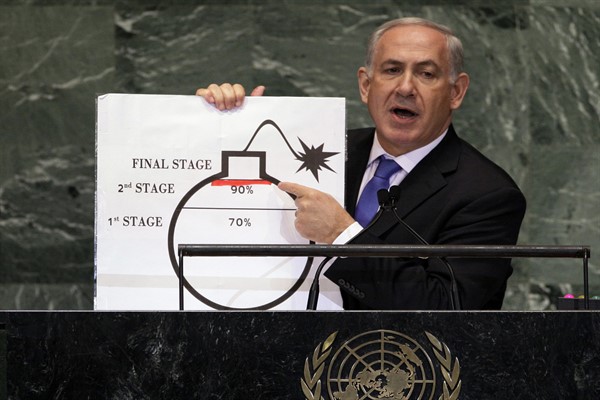Reports that Iran is nearing the point where it could conceivably develop a nuclear weapon are once again causing widespread alarm. The latest information suggests that Iran’s stockpile of enriched uranium, if significantly further enriched, is more than enough to provide the weapons-grade fissile material needed for a bomb. That alone wouldn’t be enough to build—or deliver—a working bomb, but it does put Tehran closer than ever to equipping one.
The news comes as multilateral talks in Vienna to revive the 2015 Iran nuclear deal—known formally as the Joint Comprehensive Plan of Action, or JCPOA—have stalled. Iran could return to the negotiating table at the 11th hour, agreeing to return to compliance with the deal, from which the Trump administration unilaterally withdrew in 2018, in exchange for sanctions relief and a normalization of relations with the West. But this seems increasingly unlikely, meaning Iran will once again be poised for a “nuclear breakout” scenario, by which it could slowly accumulate the necessary components for a bomb under the guise of a civilian nuclear program, and then assemble them into a nuclear weapon faster than efforts to stop it can be mobilized.
Even short of Iran possessing a nuclear bomb, this prospect is viewed as alarming because, as Eric Brewer wrote recently in Foreign Affairs, “Iranian foreign policy would grow bolder and more aggressive if Tehran believes it can hang the nuclear breakout sword of Damocles over the head of the international community.” Armed with a bomb, Tehran could be even more reckless.

